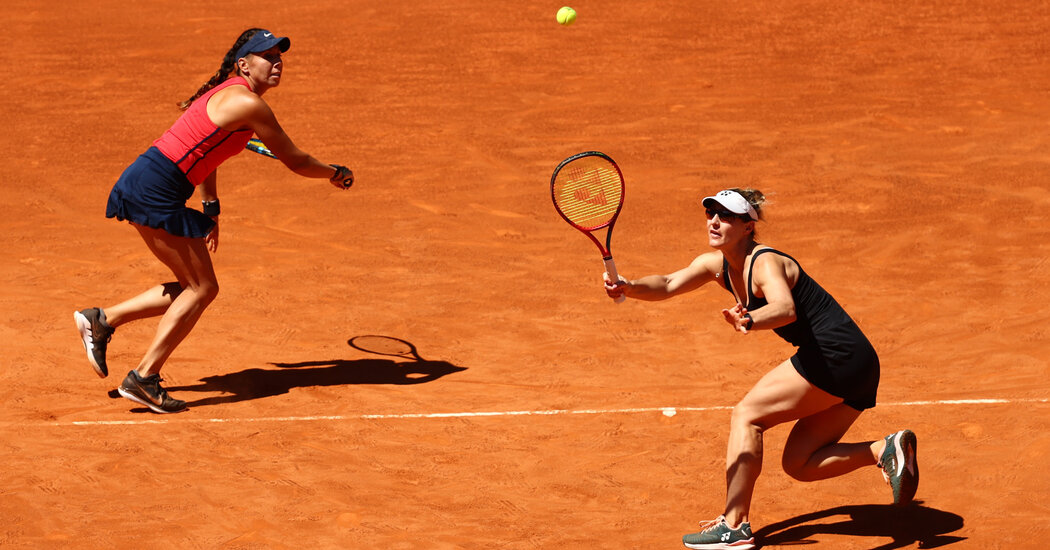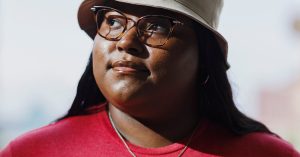
Gaby Dabrowski is the sixth-best doubles player in women’s professional tennis. She has been an Australian and French Open mixed doubles champion, and she reached the final in women’s doubles at Wimbledon in 2019. She has won 11 career WTA titles and competed for Canada in the 2016 Rio Olympics.
But Dabrowski has no endorsement contracts other than the free equipment she receives from the racket manufacturer Yonex. She said she could not afford a full-time coach, trainer or physio. She buys her tennis clothes online from sustainable companies and is grateful to the Women’s Tennis Association for a mental wellness program that allows her to tap into tour-sponsored psychologists.
“Doubles specialists, even during regular times before the pandemic, earn about 10 percent of what singles players make,” said Dabrowski, who relies on spot coaching at home and at occasional tournaments. “Fortunately, I am quite frugal. My father taught me how to budget at a very young age, and I don’t live an extravagant lifestyle.”
Over the course of her 11-year career, Dabrowski, 30, has earned nearly $3.5 million. At the recent Madrid tournament, which she won with her partner Giuliana Olmos, Dabrowski earned $198,133. The next week she and Olmos got to the final of the Italian Open and won $33,815 each. But with the cost of travel, hotels, food, clothing and coaching, Dabrowski says she comes out barely ahead.
“The pandemic made things a lot harder,” said Dabrowski, who sits on the WTA Players’ Council and was instrumental in the reallocation of prize money in which players at the top of the game receive a smaller share for winning a tournament, and players who lose in the first round, those who are struggling or are trying to break through, are awarded a greater percentage.
“If we learned anything, it’s that we have to be looking out for those lower-ranked players so they never say they have to quit because they can’t make a living playing tennis,” Dabrowski said. “We need to protect and sustain the game for them.”
Tennis has historically been the most lucrative of all women’s professional sports. In 1970, Gladys Heldman, the publisher of World Tennis magazine, persuaded the Philip Morris brand Virginia Slims to put up $7,500 to sponsor the first women’s pro tournament in Houston.
Heldman then persuaded Billie Jean King, Rosie Casals and seven other young women to sign $1 contracts to play professional tennis. The so-called Original Nine players did not earn as much collectively in their careers as Ashleigh Barty won for taking the singles title at the 2019 Shiseido WTA Finals in Shenzhen, China. The $4.42 million that Barty took home that day is more than double the $1,966,487 that King made over her 31-year career, which included 39 major championships in singles, doubles and mixed doubles.
That, of course, does not compare with the $94,518,971 that Serena Williams, the sport’s overall top earner, has amassed. She has more than doubled that figure in endorsements. Naomi Osaka, who has played in just nine WTA tournaments over the last year, tops Forbes’ list of highest-paid female athletes for 2022, generating some $58 million from more than 20 corporate sponsors. She ranked just behind LeBron James, Roger Federer and Tiger Woods, but ahead of Lionel Messi, Cristiano Ronaldo and Tom Brady. Every year since 1990, when Forbes started listing highest paid female athletes, the leader has been a tennis player.
“Tennis has always led the way because we are a global sport,” said King, who in 1971 became the first female athlete to earn $100,000 in prize money. “In 1970, we literally had to kill ourselves to get prize money and attention for women’s tennis,” King said. “Even now, we have to work to be No. 1. And the way we do that is by realizing that we are entertainers and there for our audience.”
Over the last 52 years, the women’s tour has had nine presenting sponsors, including Colgate, Avon and Toyota. After 12 years without a title sponsor, the WTA recently partnered with Hologic, a women’s diagnostic and medical imaging company, which has pledged millions of dollars in a multiyear deal.
Prize money in women’s tennis grew to a high of $179 million in 2019, shortly before the tour was halted for four months because of the pandemic. The WTA overall prize money is now at $157 million for 2022.
“The past two years have been very challenging for the WTA, our members and for many businesses around the world,” Steve Simon, the organization’s chief executive wrote in an email. “We are proud of the fact that our tournaments and players did what was required to operate over this period.”
For Simon, one of the great challenges has been the loss of revenue from Southeast Asia. In 2019, the tour entered into a $14 million agreement with the Japanese skin care company Shiseido to sponsor the WTA Finals in China. When Barty won the tournament, she took home the largest prize ever in the sport, for men or women.
A year later, with the pandemic raging in China, that deal was dissolved. Then, when the Chinese player Peng Shuai suddenly disappeared from view after saying that she was sexually abused by a high-ranking member of the Chinese government, Simon announced that he was canceling all WTA events in China for this year. Last season’s year-end finals were moved to Guadalajara, Mexico, but the money offered was roughly a third of what it had been in Shenzhen.
Another issue facing tennis is the rising profile of women’s team sports, especially soccer and the Women’s National Basketball Association. About two weeks ago, the U.S. women’s national soccer team entered into a collective bargaining agreement with the United States Soccer Federation in which the men’s and women’s teams will receive equal pay for equal work.
“Equality in team sports is essential, especially in terms of equal prize money,” said King’s business partner, Ilana Kloss. “But women still have a long way to go. Forty percent of athletes are women, and they receive only 4 percent of the media coverage. So many of these big tennis tournaments are owned by conglomerates and investment groups. And those companies now have women at the top who are realizing that women’s sports are good for business. It isn’t just an old boys’ club anymore. We’re learning that the tide now affects all boats.”
In tennis, women still lag significantly behind men in financial compensation at most tournaments except the majors. At Wimbledon and the Australian, French and United States Opens, prize money has been equal since 2007. At this year’s French Open, the winner of both the men’s and women’s singles will pocket 2.2 million euros, almost $2.4 million. Joint tour events in Indian Wells, Calif., and Miami also offer equal prize money. But that isn’t true everywhere.
On May 15, the world No. 1 Iga Swiatek won the Italian Open and was awarded €322,280. Hours later, Novak Djokovic beat Stefanos Tsitsipas for the men’s championship and won €836,355. Tsitsipas, the second-place finisher, earned more than €100,000 more than Swiatek.
“Does that seem fair?” asked Pam Shriver, who won 79 women’s doubles titles with Martina Navratilova. Shriver suggested that the only way female players can get equal pay in Italy is if female entrepreneurs like King, Serena and Venus Williams, Navratilova and Chris Evert step in and buy the tournament.
“We’ve come to learn that not all joint events are created equally,” Shriver said. “At some tournaments, it’s cultural not to pay women as much. But in tennis the pie keeps getting bigger. Now we just have to take a stance and make sure it is equal.”
And then there is Tsitsipas, who, earlier this spring, waded into the topic by asking an old question in tennis: Should women receive the same prize money as men when they play two out of three sets at the majors and men play three out of five? Women argue that it’s about entertainment value and ticket sales, not solely about time spent on the court.
“I don’t want to be controversial or anything,” Tsitsipas said. “There is the topic of women getting equal pay for playing best of three. There are a lot of scientists and statisticians out there. I’ve been told that women have better endurance than men. Maybe they can play best of five.”
